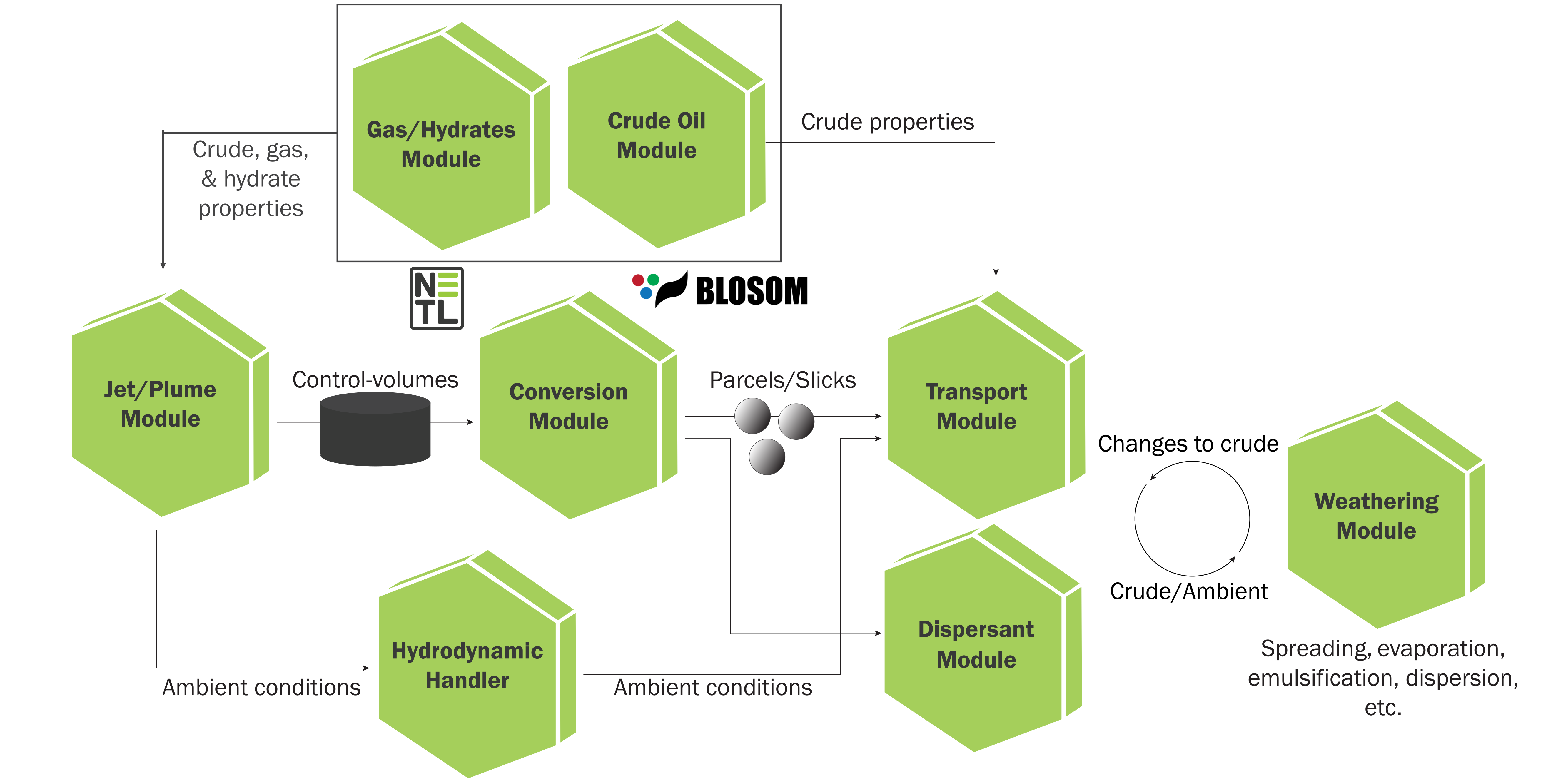 BLOSOM (Blowout & Spill Occurrence Model) is a spatially-explicit and 3-dimensional model with versions written in Java and C++ for simulating oil spills and deepwater blowouts (à la Deepwater Horizon), including near-field jet dynamics, submerged oil plumes, fate, weathering, and degradation. Started in late 2011 as a simple extension to be built on-top of an existing GIS platform, BLOSOM has developed into a stand-alone modeling suite with a high level of functionality and flexibility.
BLOSOM (Blowout & Spill Occurrence Model) is a spatially-explicit and 3-dimensional model with versions written in Java and C++ for simulating oil spills and deepwater blowouts (à la Deepwater Horizon), including near-field jet dynamics, submerged oil plumes, fate, weathering, and degradation. Started in late 2011 as a simple extension to be built on-top of an existing GIS platform, BLOSOM has developed into a stand-alone modeling suite with a high level of functionality and flexibility.
Check out our publication: Developing a Comprehensive Deepwater Blowout and Spill Model

In accordance with the 3-dimension regime of a deepwater blowout, BLOSOM tracks the movement of hydrocarbons throughout the water-column, in addition to more traditional methods of modeling surfaced slicks. The spill is handled through three distinct regimes, those being the multi-phase, turbulent jet emanating from the well-head, oil plumes and droplets in the water-column, and the surfaced oil slick — simulating the entirely of a blowout-sourced spill by merging several different modeling approaches into a multi-component, modeling package.
Of particular importance was following the development and fate of submerged oil plumes in the water-column which are difficult to monitor and predict, as evidenced by the Deepwater Horizon Spill. Efforts both in capturing the complexity of the near-field as well as best handling the transitional phases allow BLOSOM to simulate the formation and fate of submerged oil plumes, particularly due to droplet-sizes.
All this is backed by a highly adaptable, pseudo-component crude oil model, using a library of correlations to estimate a range of component properties needed from limited data, and providing more detailed pictures of weathering and changes to oil composition. Combined with a flexible handler for hydrodynamic and bathymetric data, BLOSOM is capable of simulating large and long-lasting spills from source to final fate and degradation.
BLOSOM was originally developed in support of DOE and NETL’s Offshore Energy Resources research portfolio. It is one component of NETL’s broader Offshore Integrated Assessment Modeling suite that has been developed since 2010 to support offshore spill prediction, prevention, preparation, and risk analyses.
BLOSOM Information & Download
From EDX metadata listing; download link available under “Data and Resources”
Information & Resources
Learn more about BLOSOM
Frequently Asked Questions (FAQ)
See BLOSOM in action
Here is a series of ongoing tutorials on how to use BLOSOM
Need ocean model data? Try these sites:
Related Links
Variable Grid Method – Simultaneously visualize and quantify spatial data trends and underlying data uncertainty



